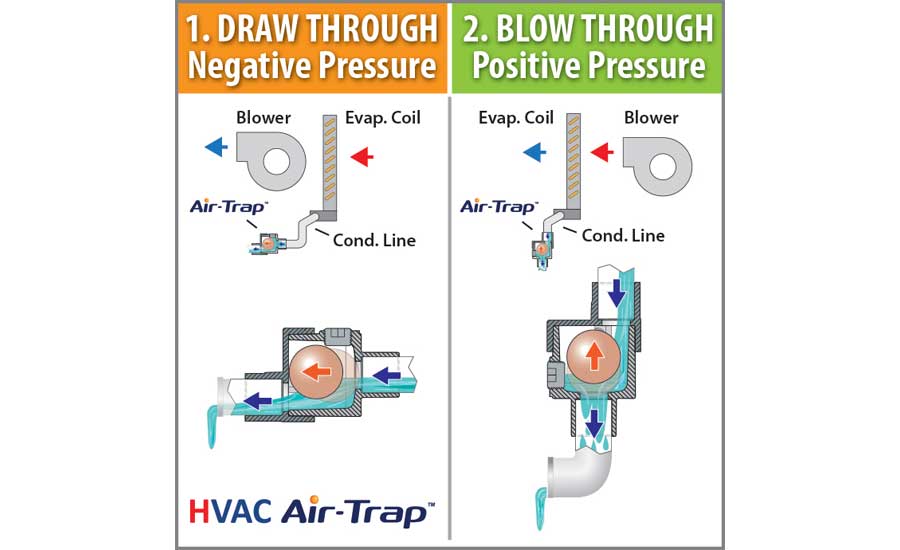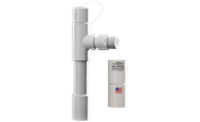Des Champs Technologies series of HVAC Air-Trap™ are designed specifically to remove condensate from HVAC equipment and eliminate the following negative issues:
- Operating dry with loss of air and energy
- Freezing
- Sludge buildup
- Geysers and rusted coil compartment
- Insufficient height availability
- Incorrect field design
- Priming
- Heat tracing
The HVAC Air-Trap uses air pressure generated by the unit fans to prevent air leakage to or from the air handler. With negative pressure, the ball valve is sucked against the seat until the water column upstream of the ball reaches a height in inches equal to the negative pressure at the cooling coil in inches WC at which time water flows. With positive pressure, the pressure exerts a force on the float valve and no condensate flows through the trap until the water level above the seat is enough to buoy the valve off the seat, then water flows but the air is sealed. The P and N series are for commercial applications and have slip connections from ¾ to 1½- inch connections, and the RLC is residential and light commercial and has ¾-inch slip or 1-inch fitting connections. The FCN is for fan coil and residential application and has ¾-inch slip or ½-inch with bushing. All the negative units will operate at any HVAC type pressure. The P-Series will operate up to 12 inches WC.
Since the Air-Trap does not require water to operate, it essentially always prevents air leakage from or to the air handler.
Des Champs Technologies developed the Air-Trap to operate effectively in data center applications. Cooling most of the year uses ambient air but several times during the warmer months, mechanical refrigeration is required so traps must be installed.The company has two more traps under development: one that allows up to 100 inches of positive pressure, or more, with an Air-Trap that requires only a total of 3-inches height, and a negative trap that can handle any negative pressure and no added height (it can be placed inside the unit).
Content provided by Des Champs Technologies
Want more HVAC industry news and information? Join The NEWS on Facebook, Twitter, and LinkedIn today!










